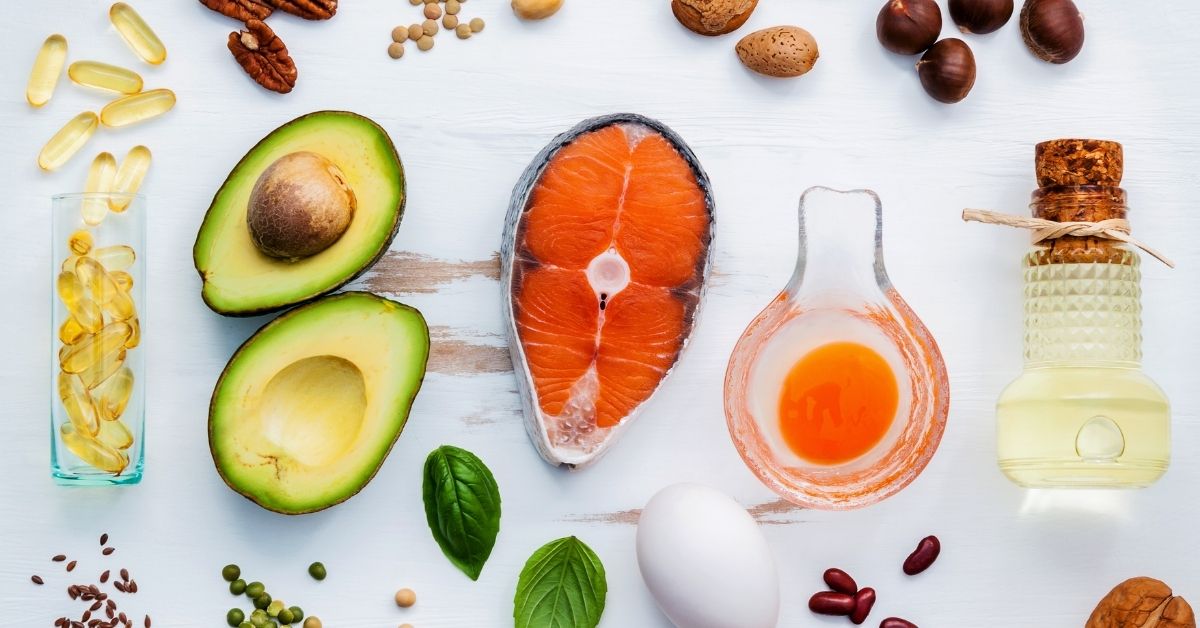|
Omega-3 fatty acids are a subgroup of the polyunsaturated fatty acids, one of the "good" fats. Some fatty acids can be made by the body and others cannot - these must be obtained from the diet. These are known as essential fatty acids. Omega-3 fatty acids are a type of essential fatty acid that have been found to have many positive roles in our bodies, including a strong relationship with fertility. Just as trans fatty acids found in many processed foods are related to lower fertility, long-chain omega-3 fatty acids are related to better fertility and higher live birth rates in assisted reproductive treatments. What do Omega-3s Do?Omega-3 fatty acids are important in controlling inflammation. They contain compounds used to make resolvins that quickly resolve inflammation, and optimal dietary intake is associated with positive outcomes for women trying to conceive and those undergoing assisted reproductive treatments such as IVF. Optimal dietary intake is also important to support sperm quality as the fatty acid content of sperm membranes is associated with higher sperm motility, normal morphology, and concentration. Fatty acids are important substrates in early reproductive events including oocyte maturation and embryo implantation. The importance of the right fatty acid intake is highlighted in a study exploring pre-conception diet in North American women and Danish women. Higher intakes of omega-3 fatty acids are associated with better quality embryos and higher change of pregnancy, while low intake of omega-3 fatty acids reduces the chance of pregnancy [1, 2]. North Americans were less likely to conceive then the Danish women, who had higher intakes of omega-3 fatty acids (average intake for North Americans was 0.87% of energy intake compared to the Danes higher intake of 1.07%). Trans fat intake is also higher in the north American diet (~1% of daily energy intake) than in Norway (0.6% of daily energy intake) [3] and these have been shown to have negative impacts upon our gut microbiome and fertility. While omega-3s ensure the health of our cell membranes and cell function, they also enhance intestinal immunity to reduce inflammation. Reducing inflammation helps reinforce the intestinal barrier, reducing the translocation of immune stimulating compounds into the blood stream. This is good news for fertility! EPA (eicosapentaenoic acid) and DHA (docosahexaenoic acid) are found in fish oil and marine algae and are considered the most valuable forms of omega-3 for the body. Omega-3s are also found in the form of alphalinolenic acid in plant foods eg.chia seeds, canola, flaxseed, linseed, walnuts, edamame, kidney beans and soy bean oil. However, alphalinolenic acid is not readily converted to DHA and a marine source is recommended eg. fish oil or marine algae oil. What About Omega-6?Omega-6 fatty acids are another form of polyunsaturated fatty acids which like omega-3 fatty acids, cannot be produced by the body. Omega-6 fats have a different chemical structure and role in the body to omega-3 fats. Omega-6 fatty acids are found in vegetable oils such as sunflower, safflower, maize, cottonseed, peanut, grape seed, as well as in margarines. Most people consume a higher proportion of omega-6 than omega-3 fat. While omega-6 fatty acids are not "bad" fats, including too much omega-6 and not enough omega-3 can lead to an increase in inflammation. For good health the body needs a balanced intake of omega-6 to omega-3. The best sources of omega-3 fatty acids are oily fish. While a great source of omega-3s, they also contain omega-6s you may want to stop and think about where your salmon is coming from. Farmed salmon is higher in fat and contains more energy than fresh caught salmon. While it does contain Omega-3s, it also contains a higher dose of Omega-6 which may promote inflammation if intake is too high. As a bonus, the mineral and vitamin content of fresh caught salmon is greater than farmed salmon! If you are not including a quality salmon in your diet twice a week (or are not able to access wild caught salmon which can be difficult in Australia), consider including a reputable omega-3 supplement. Recent research is showing that omega-3s combined with olive oil or marine oils offer delivers synergistic benefits. The natural protective polyphenols in olive and marine oils protect the omega-3s from oxidation [4], enhancing their absorption and anti-inflammatory properties. Know Your Omega-3: Omega-6 RatioThe balance of omega-6 to omega-3 can be good indicator of our bodies ability to regulate inflammation (which impacts fertility) and a potential indicator of fertility, not just for women. Fertile men have higher concentrations of Omega-3 fatty acids while infertile men have a higher omega-6:omega-3 ratio [5]. A healthy ratio may be considered less than 4:1. The typical omega-6 to omega-3 ratio on a Western diet is 20:1! Reducing this ratio is an effective strategy to support reproductive health and fertility. Would you like to find out your omega-6:omega-3 ratio and strategies to improve this? Come and see us! References1. Hammiche, F., et al., Increased preconception omega-3 polyunsaturated fatty acid intake improves embryo morphology. Fertil Steril, 2011. 95(5): p. 1820-3.
2. Chiu, Y.H., et al., Serum omega-3 fatty acids and treatment outcomes among women undergoing assisted reproduction. Hum Reprod, 2018. 33(1): p. 156-165. 3. Wanders, A.J., P.L. Zock, and I.A. Brouwer, Trans Fat Intake and Its Dietary Sources in General Populations Worldwide: A Systematic Review. Nutrients, 2017. 9(8). 4. Mendez, L. and I. Medina, Polyphenols and Fish Oils for Improving Metabolic Health: A Revision of the Recent Evidence for Their Combined Nutraceutical Effects. Molecules, 2021. 26(9). 5. Safarinejad, M.R., et al., Relationship of omega-3 and omega-6 fatty acids with semen characteristics, and anti-oxidant status of seminal plasma: a comparison between fertile and infertile men. Clin Nutr, 2010. 29(1): p. 100-5. Comments are closed.
|
|
1300 084 694
[email protected] Suite T36, 477 Boundary St Spring Hill, Brisbane QLD 4000 Fax. 07 3540 8164 Copyright © 2022
|



